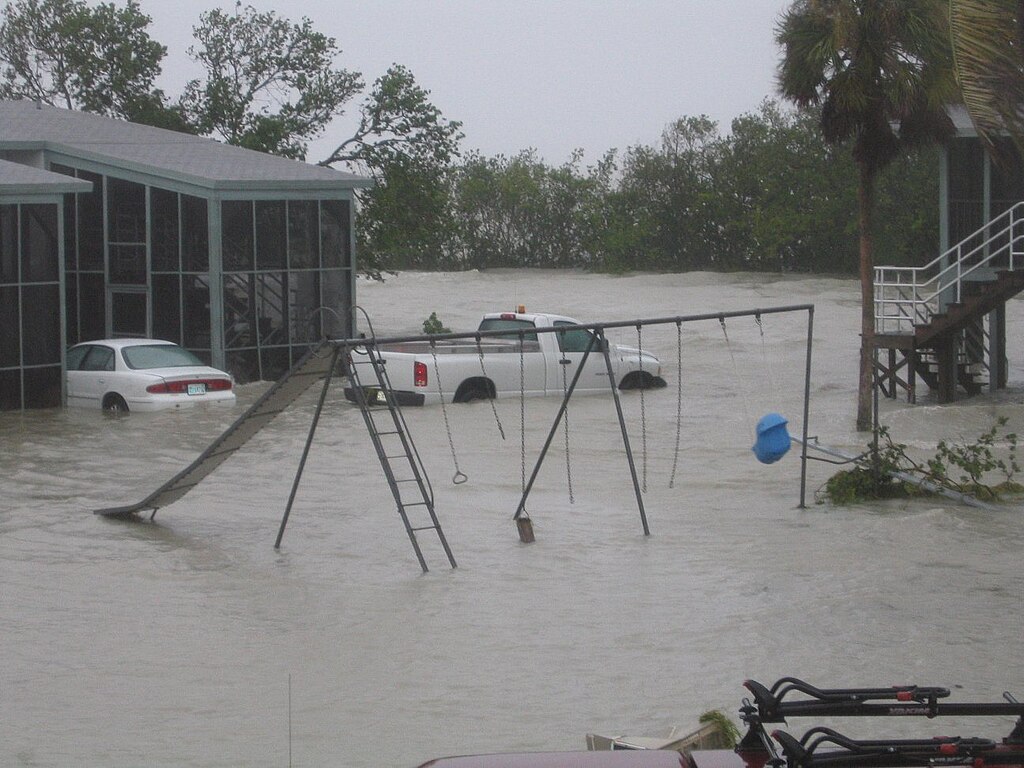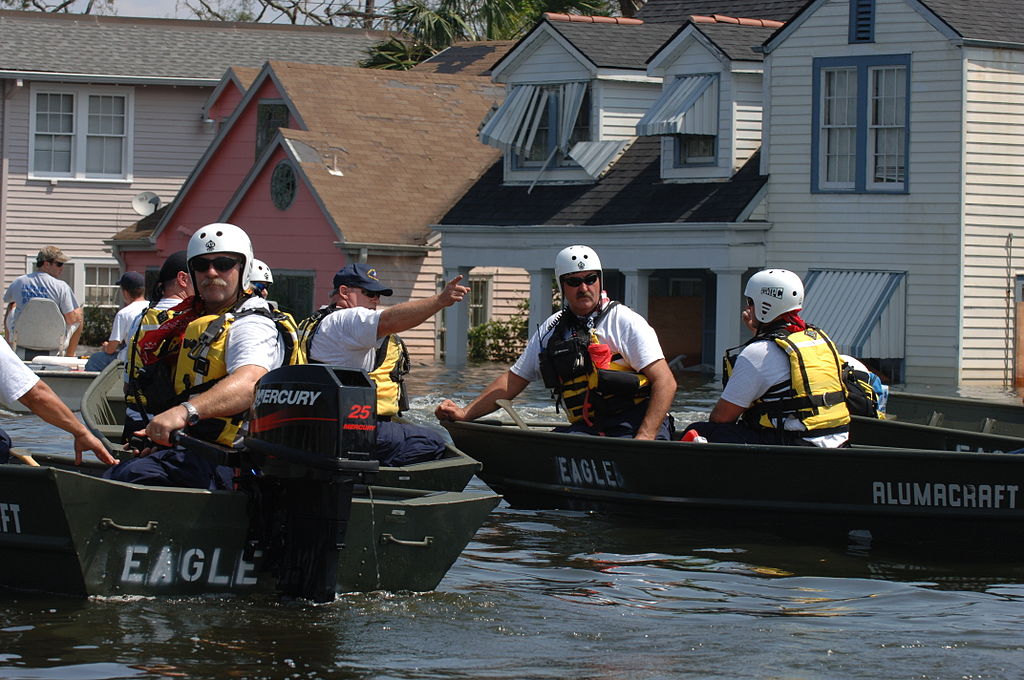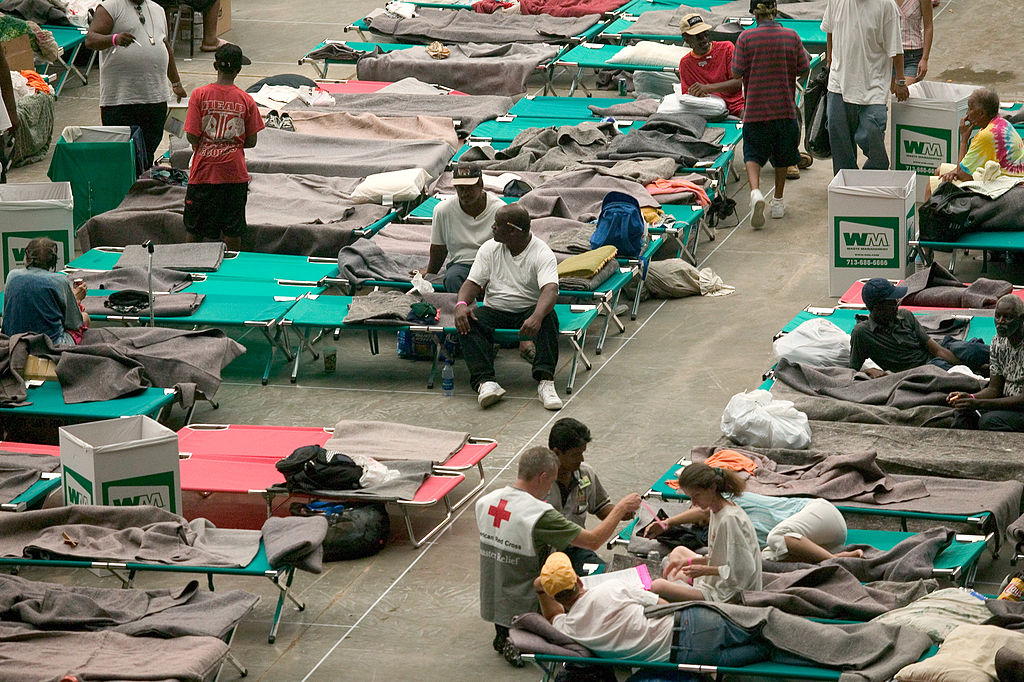John Mutter remembers seeing the roofs of single-story homes poking above the water level in the Lower Ninth Ward in New Orleans. Houses in poorer, lower-lying parts of town, he said, were cleared off their foundations and plopped across the street.
Mutter, a professor of Earth and environmental sciences at Columbia’s School of International and Public Affairs, visited the Gulf Coast after the storm and spoke with Centers for Disease Control and Prevention officials responsible for determining the death toll. “You can always figure out [roughly] who died of what,” he said. “But the circumstances and detailed causes are very hard to come by.”
This week marks the 20th anniversary of Hurricane Katrina’s historic landfall on August 29, 2005, when 125 mph winds and 30-foot storm surges devastated the Gulf Coast. Although the U.S. Army Corps of Engineers (USACE) built a network of levees and flood walls to shield New Orleans from inundation, over 50 structural failures along the system—last updated after 1965’s Hurricane Betsy—triggered widespread flooding and left 80 percent of the city submerged. Katrina remains the costliest natural disaster in U.S. history, with 1,392 fatalities (a figure determined by the National Hurricane Center in 2023).
Twenty years after Katrina exposed deadly flaws in the nation’s hurricane preparedness and disaster response, one question lingers: Is the U.S. ready for the next big one?
Through the eyes of Columbia University faculty—some who traveled to assist survivors while others analyzed the catastrophic damage from New York—the warning is clear. Weakened federal agencies, willful political negligence and persistent socioeconomic inequities, they say, will continue to leave the most vulnerable at risk when the next Katrina inevitably comes.
The Calm Before the Storm
Twenty years ago and 1,000 miles away, four Columbia faculty were closely monitoring forecasts and preparing for action, driven by their commitment to disaster preparedness and their recognition of systemic failures in response for vulnerable communities.
Katrina’s ferocity was well documented days before the hurricane approached the Gulf Coast. But delayed evacuation orders and low car ownership left many residents unable to escape.
At 9 a.m. on August 28—approximately 21 hours before landfall—Ray Nagin, then mayor of New Orleans, issued the city’s first-ever mandatory evacuation shortly after Katrina was upgraded to a Category 5 storm. Still, an estimated 100,000 to 150,000 residents stayed put.
“The evacuation was called too late to be effective,” said Mutter. “You could order an evacuation, but there’s nothing that [many] people could do about it.”
According to the 2000 census, over one in four New Orleans residents were living in poverty—equivalent to $17,050 for a family of four—making the city tied for sixth poorest in the nation.
Even if people wanted to evacuate, many lacked transportation, especially with just 21 hours’ notice. Overall, 15 percent of white households and 35 percent of Black households lacked vehicles, and among households living in poverty, this figure hovered near 54 percent.
“It was clear from the very beginning that there [would be] a large death toll,” Mutter said. “That doesn’t usually happen in developed countries.”

A Refuge Becomes Hell
As Katrina closed in, the Superdome became a refuge for 10,000 people—a figure that would more than triple over the next few days as residents stranded on roofs were rescued.
“You didn’t go [to the Superdome] unless you were poor,” said Steven Cohen, senior vice dean of Columbia’s School of Professional Studies. Cohen oversaw disaster research at Columbia’s Earth Institute after Katrina. Supplies were limited, with evacuees reportedly receiving just two 9-ounce bottles of water and two boxed meals a day.
The Superdome’s power failed as Katrina made landfall. Shortly after, reports from the stadium said parts of the roof were peeling off, flooding the turf. Inside, temperatures climbed to the 90s when the air conditioning failed, and food spoiled in powerless refrigerators.
“Families were warehoused in the Superdome—a dystopian nightmare of manhandling poor people,” said Irwin Redlener, a pediatrician and public health activist who founded the National Center for Disaster Preparedness (now part of Columbia Climate School). “There was an ugly eruption of a new level of racism in an already racist city.”
Picking Up the Pieces
The Federal Emergency Management Agency (FEMA) sent 475 buses to evacuate the Superdome on September 2. By the time the last evacuees arrived in Houston, it had been a week since residents started piling into the stadium.
“Katrina was an expression of social inequality,” Mutter said. Nearly all evacuees in Houston were from New Orleans. Over 90 percent were Black, and six in 10 had 2004 household incomes below $20,000 (roughly $34,000 in 2025 dollars).
Rescue missions and relief operations began immediately after the storm. By September 8, over 51,000 Army and Air National Guardsmen were in the Gulf region—one of the largest domestic mobilizations of the National Guard until the COVID pandemic in 2020.

The Children’s Health Fund, a health care network co-founded by Redlener and singer-songwriter Paul Simon, brought medical aid to under-resourced communities. Its cerulean mobile clinics became an emblem of help in Biloxi, Baton Rouge and New Orleans.
“We were seeing lots of kids. Dozens of low-income children undergoing cancer treatment lost their medical records,” Redlener recalled. “They were sent to St. Jude’s in Tennessee, and doctors had to guess what they were dealing with.”
Many storm-related injuries and infections lacked appropriate follow-up care, said Redlener. There was an array of medical issues: mold-related problems, infections, pediatric asthma and more.
Other ailments were less visible and lingered beneath the surface. “A lot of people were just depressed and anxious,” Redlener said.
In a post-Katrina survey, 47.7% of the study sample—mostly young, low-income, Black mothers—displayed probable post-traumatic stress disorder.
Meanwhile, rescue crews pulled survivors from homes and recovered bodies of those who did not survive. Drowning and physical trauma were the leading causes of death, followed by indirect causes like cardiovascular issues, carbon monoxide poisoning and motor accidents. Even 20 years later, the number of casualties is subject to debate.
“How long do you keep counting?” Mutter said. “How many days later would you still say somebody died because of the hurricane?”
The public health system was damaged beyond repair, leaving many without proper care, said Mutter. Months after the storm, Orleans Parish’s mortality rate in the first half of 2006 was 21% higher than the same period in 2002 to 2005.

A Safer City, A Riskier Nation: Are We Ready?
As of February 2006, FEMA provided $6 billion in aid—housing assistance and other emergency needs—for survivors of Hurricanes Katrina and Rita, another storm that struck southwestern Louisiana weeks after Katrina.
Congress authorized $14.5 billion shortly after Katrina for the reconstruction of the system of levees, flood walls and pump stations, and in 2019, the USACE completed the 350-mile-long network to protect against once-in-a-century floods.
But recent shifts in the federal government have warped disaster management. “All the progress FEMA made since Katrina has been destroyed under the Trump administration,” Cohen said. “They’ve taken an organization that was getting better and destroyed it.”
FEMA manages disaster recovery after the president approves a governor’s request for a major disaster or emergency declaration—a difficult order as President Trump is eager to eliminate the agency and shift disaster management responsibilities to states.
“The U.S. was better prepared before Trump,” said Michael Gerrard, founder of Columbia’s Sabin Center for Climate Change Law, which is part of the Climate School. “It’s almost always beyond the capacity of state and local governments to adequately cope. That’s why we need national resources.”
President Trump aims to “wean off of FEMA,” which could be eliminated once the Atlantic hurricane season ends in November.
The agency’s director, Cameron Hamilton, was fired in May and replaced with David Richardson, a Department of Homeland Security official—one with little experience in emergency management. Over a dozen top FEMA officers consequently resigned, and an additional 200 employees were fired by the Trump administration.
“The whole point of FEMA is a recognition that the cities and states can’t cope,” Mutter said. “When Katrina happened, it was clear early on that New Orleans was overwhelmed.”
The nation’s readiness in disaster management—including the rebuilt levee system—was put to the test in 2021 with Hurricane Ida, which struck just 50 miles west of Katrina’s landfall site. It packed strong central winds and produced impressive storm surges like Katrina. Although the new infrastructure was designed to withstand 30-foot surges, mandatory evacuations were issued outside the flood protection zone.
“The levees held up,” Gerrard said. “The city’s more resilient now than before.”
New Orleans itself saw minor flooding, but neighboring coastal communities suffered catastrophic flooding—their levees were not completed until the summer after Ida. Still, despite significant investments, lingering trauma from Katrina leaves many wary of future storms.
“Frankly, we won’t know until Katrina happens again,” Mutter said.
Source link
Guest news.climate.columbia.edu


